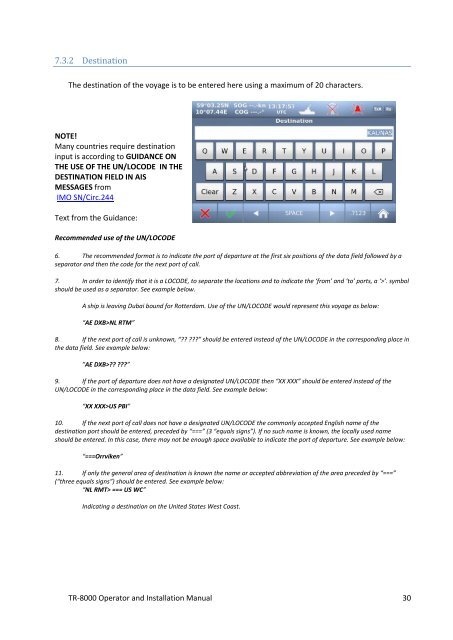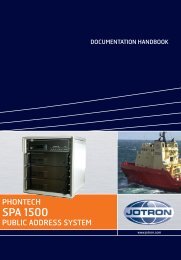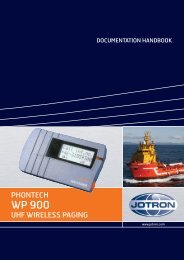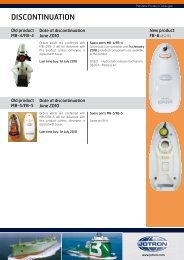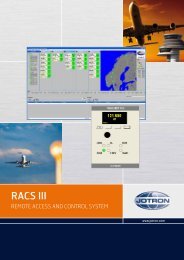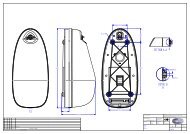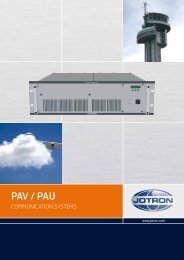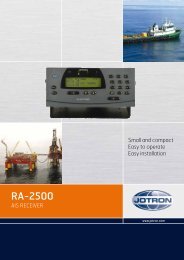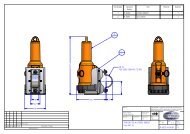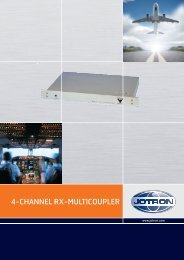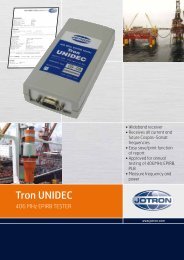Operator and Installation Manual Tron AIS TR-8000.pdf - Jotron
Operator and Installation Manual Tron AIS TR-8000.pdf - Jotron
Operator and Installation Manual Tron AIS TR-8000.pdf - Jotron
You also want an ePaper? Increase the reach of your titles
YUMPU automatically turns print PDFs into web optimized ePapers that Google loves.
7.3.2 Destination<br />
The destination of the voyage is to be entered here using a maximum of 20 characters.<br />
NOTE!<br />
Many countries require destination<br />
input is according to GUIDANCE ON<br />
THE USE OF THE UN/LOCODE IN THE<br />
DESTINATION FIELD IN <strong>AIS</strong><br />
MESSAGES from<br />
IMO SN/Circ.244<br />
Text from the Guidance:<br />
Recommended use of the UN/LOCODE<br />
6. The recommended format is to indicate the port of departure at the first six positions of the data field followed by a<br />
separator <strong>and</strong> then the code for the next port of call.<br />
7. In order to identify that it is a LOCODE, to separate the locations <strong>and</strong> to indicate the ‘from’ <strong>and</strong> ‘to’ ports, a ‘>’. symbol<br />
should be used as a separator. See example below.<br />
A ship is leaving Dubai bound for Rotterdam. Use of the UN/LOCODE would represent this voyage as below:<br />
“AE DXB>NL RTM”<br />
8. If the next port of call is unknown, “?? ???” should be entered instead of the UN/LOCODE in the corresponding place in<br />
the data field. See example below:<br />
”AE DXB>?? ???”<br />
9. If the port of departure does not have a designated UN/LOCODE then “XX XXX” should be entered instead of the<br />
UN/LOCODE in the corresponding place in the data field. See example below:<br />
“XX XXX>US PBI”<br />
10. If the next port of call does not have a designated UN/LOCODE the commonly accepted English name of the<br />
destination port should be entered, preceded by “===” (3 “equals signs”). If no such name is known, the locally used name<br />
should be entered. In this case, there may not be enough space available to indicate the port of departure. See example below:<br />
“===Orrviken”<br />
11. If only the general area of destination is known the name or accepted abbreviation of the area preceded by “===”<br />
(“three equals signs”) should be entered. See example below:<br />
“NL RMT> === US WC”<br />
Indicating a destination on the United States West Coast.<br />
<strong>TR</strong>-8000 <strong>Operator</strong> <strong>and</strong> <strong>Installation</strong> <strong>Manual</strong> 30


